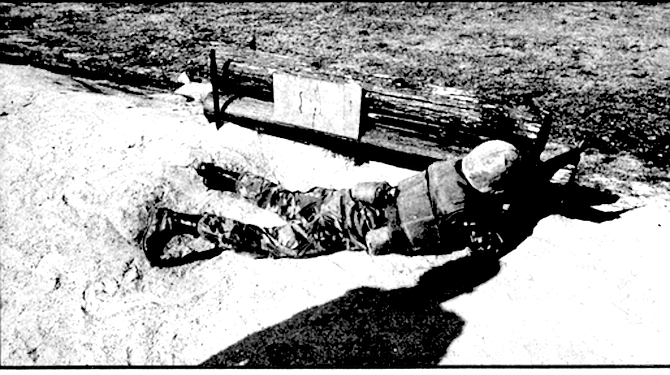
“We’ve gotten rid of all that mad dog kill, kill, kill stuff."
- In 1942, the Ninth Marine Division marched in and took over what had been the Santa Margarita y Las Flores Ranch. The Second World War had begun and the United States needed a place, a gargantuan place, to train its warriors to fight on the Pacific islands. Camp Pendleton became the biggest amphibious warfare training area in the United States.
- By Neal Matthews, Nov. 16, 1978
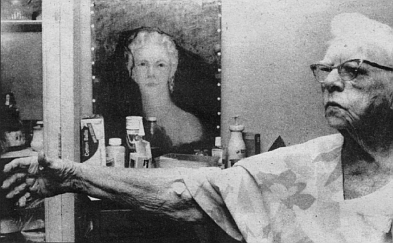
Bessie Magee Gardner:, 90: “I knew all the vaqueros. I had my own saddle horses there, six of them. I rode every day and I know every stick of that ranch."
- San Diego is the kelp capital of the world. For many, especially local beachgoers, boaters, fishermen, and seaside residents who are all too familiar with the long, brown, rubbery, leafy strands of kelp, this is a somewhat dubious distinction. Those who have had to untangle a fishing line, relinquish the beach to the swarms of flies attracted by unsightly, smelly piles of rotting kelp, or spend their afternoon of sailing helplessly mired in a kelp bed, would undoubtedly welcome any program to eradicate this worthless weed.
- By Manny Ramos, Nov. 9, 1978
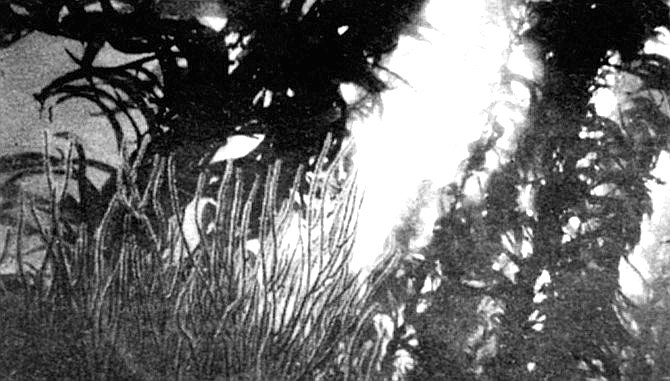
Underwater the kelp forests seem green. The water has filtered out the red from the sunlight.
- On this hot morning in May, as I load up my old battered red backpack at the Inaja Memorial Picnic Ground and prepare to head off into the brush, there’s a cowboy sitting in his jeep a few yards away watching me in his rearview mirror and trying not to laugh. He’s slouching there, his hat cocked back, one boot posed nonchalantly on the dash, and squinting defiantly into the morning sun as it rises up over the Cuyamacas to the east. Anybody, he’s thinking... who’d go out there is a damn fool.
- By Steve Sorensen, Oct. 26, 1978

I take off my pack, then my clothes, and dive into the nearest pool. Up and down the river, every frog in sight accepts my suggestion and dives in with me.
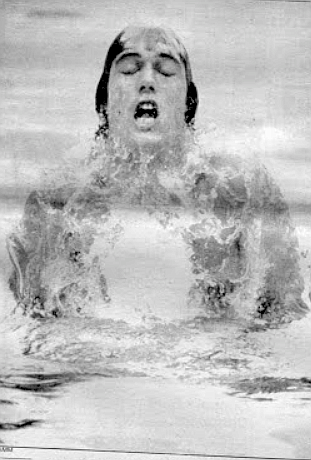
He was a sophomore in college when he competed in the Olympics, and any commercial endorsements would have left him ineligible for his remaining two years of college swimming.
- “We had an unbelievable team,” he remembers, shaking his head. “We had guys who would break American records, unofficially, at our evening workouts.” One of the standouts was Mark Spitz, who was a junior at Indiana when Stamm was a freshman. “I was pretty intrigued by Spitz.”
- By Gordon Smith, Sept. 21, 1978
- The Boogie Board was first conceived of as an alternative to the inflatable rubber surf mat. "I was always depressed by the shape of a surf mat," he recalled. "I've been surfing since I was 12 years old, and I used to rent surf mats on the beach in Laguna Beach. But a surf mat is really designed to hold air, not to surf.
- By Gordon Smith, Aug. 24, 1978
- I first met Brandon in a phone booth. I stood outside glaring incredulously at a tanned, classically sybaritic face buried in chicken wings, barbecued hot dog slivers, cheese cubes, and assorted other hors d’oeuvres. His free hand held a telephone receiver and he feigned a phone call. It was quite a balancing act. Sometimes it missed.
- By Sue Garson, Sept. 14, 1978
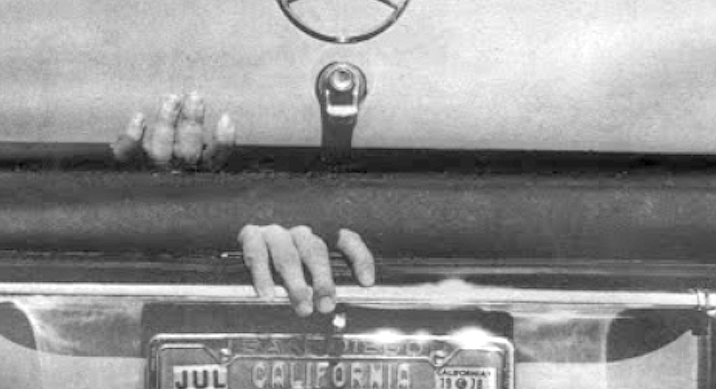
A male figure, clad only in tennis shorts and Adidas, reached into the trunk, fished out some dark dress clothes, removed his shorts, and proceeded to don evening attire.
- Here at Windansea Beach in La Jolla, surfers prefer the Vespa motor scooter for solo transportation. This is a low, fat motorcycle that you'd be crazy to take for a long fast ride. Your Vespa in the parking lot makes silent claim that you have come a short distance to Windansea beach, and this implies that you live nearby, which is definitely the best place to live.
- By Joe Applegate, Aug. 3, 1978
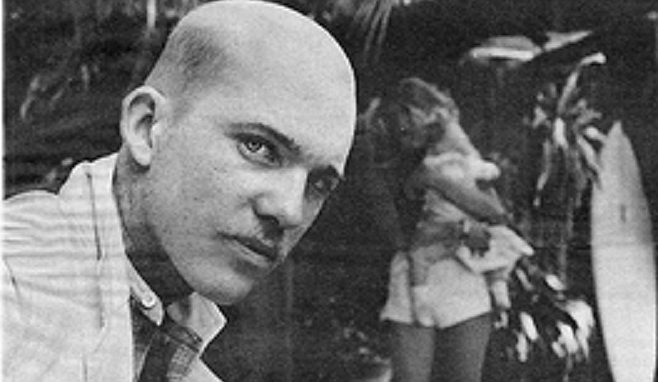
Chris O'Rourke. He motions for me to touch his head, which I do, gently — three fingertips pressing the lightly yellowed skin above the ear. The skin gives, as though there's nothing behind it but pulp.
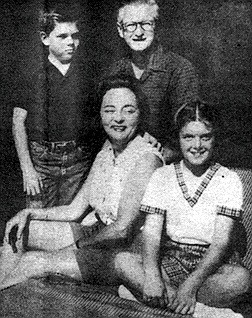
Michael, Jean, James, and Janice Copley, 1960
- On nights when the two children dined with their parents, the family without variation met beforehand in the formal library. Lined on three sides with books, it was dominated by an imposing fireplace (lit in the winter) over which hung a large painting of Ira Copley, Michael’s grandfather.
- By Eleanor Widmer, July 6, 1978
- The radio calls for a cab at the Dana Inn on West Mission Bay Drive. Taheri is there to collect a businessman and his two pieces of luggage — a $4.60 fare to the Town & Country. Chatting on the way, Taheri learns the man is from Chicago. He gives him excellent service, carrying the luggage and directing the man to his ultimate destination, a clothing convention. Taheri collects a tip of $1.40. "Businesses tip all right," he tells the reporter who rides with him, "unless they're from the South. This guy wasn't."
- By Joe Applegate, May 18, 1978
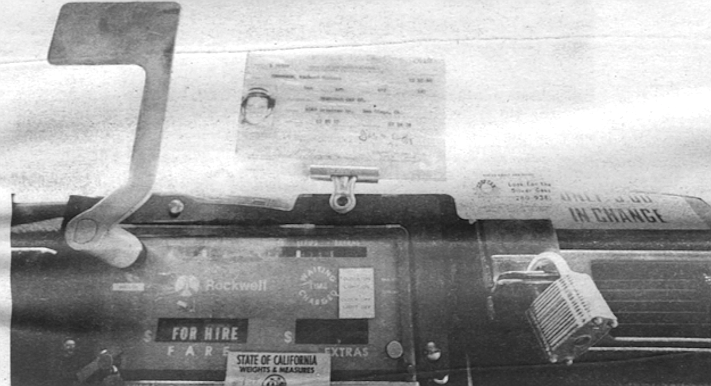
The key to making money is to save time, all the time. But the secret of making money is also knowing how to babysit.
- After thirty years, strange and wonderful things still enter the Big Eye of Palomar. I recently saw what the Messier 87 photons looked like while standing in the metal cage which hangs from the underbelly of the 200-inch Hale telescope. I had traveled out to Palomar and up the corkscrew road that leads to the observatory because I had wondered if age was beginning to dim the Big Eye. If you’re not an astronomer, it’s a reasonable question to ask.
- By Jeannette DeWyze, May 11, 1978
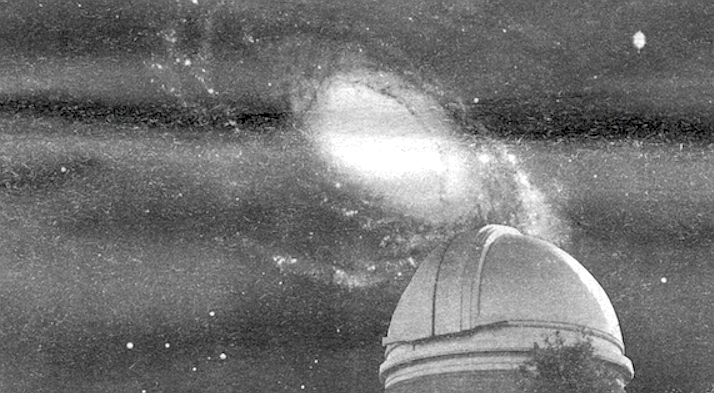
I saw the Messier 87 photons while standing in the metal cage which hangs from the underbelly of the 200-inch Hale telescope.
Photo by Robert Burroughs
- Prodanovich was one of the three young men who were venturing past the foaming combers of the Sunset Cliffs in 1932 in search of abalone, fish, and lobster. They wore vested swimsuits, swimmers’ goggles, and carried ten-foot poles topped by five-pronged spears.
- By Neal Matthews, March 30, 1978
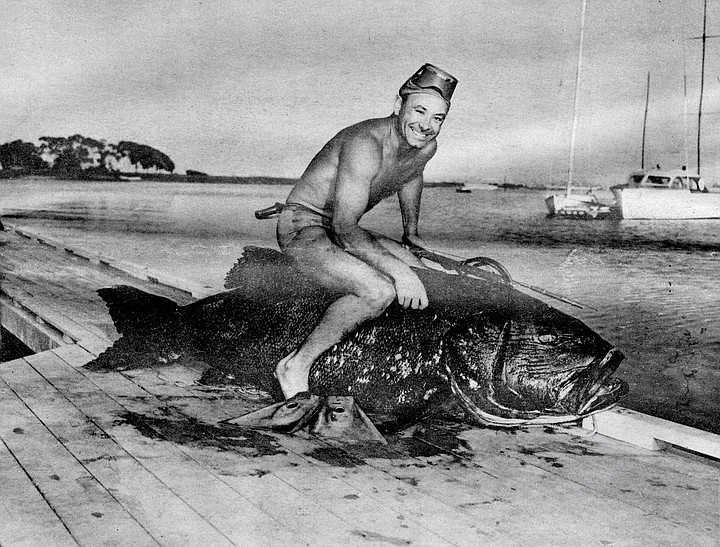
Jack Prodanovich and Black Sea Bass, c. 1954. The disappearance of larger fishes first became evident during the war.
- Jacumba is a kind of living ghost town out in southeast San Diego County, on the Mexican border, in what’s called, the Mountain Empire district. It has come through all the typical Western growing pains — a gold and silver rush, the slaughter of local Indians by cattle ranchers, the turmoil of the Mexican Insurrection of 1912. Legend has it that the Spanish made a mineral survey of the area in the 1820s, did a considerable amount of mining, and then, for some unexplained reason, buried several mule loads of gold nearby.
- By Steve Sorensen, March 16, 1978
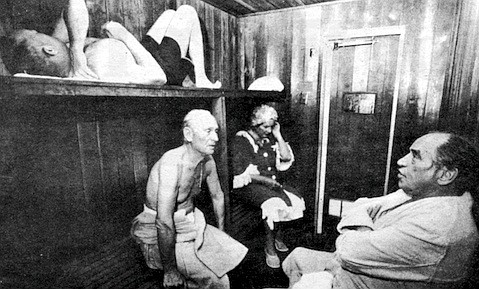
Hotel's sauna
 Facebook
Facebook
 X
X
 Instagram
Instagram
 TikTok
TikTok
 Youtube
Youtube
























